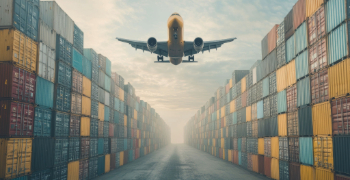
A contentious case for use tax
Sales and use tax are often lumped together like bread and butter because use tax is a complement to sales tax. If a seller doesn’t collect sales tax from a buyer at the point of sale, and the transaction is taxable, the buyer is generally required to self-assess and remit the equivalent use tax to the state taxing authority. Consumers can generally avoid incurring use tax liability by buying only from companies that will charge them sales tax.
But there’s more to use tax than that. States require businesses to pay use tax on tangible personal property purchased in another state but used in the taxing state. Use tax is almost entirely imposed on business consumption and can apply to small items like laptops, heavy equipment like steamrollers, and intangible goods like software as a service (aka, cloud computing or SaaS).
How is the taxable value of a good or service determined for use tax purposes? Can a state tax the use of property or services indefinitely? Should an item used for one day be taxed differently than an item used for one year? These are a few questions the Supreme Court of the United States could settle if it takes the case of Ellingson Drainage, Inc. v. South Dakota Department of Revenue.
First, the facts.
What is Ellingson Drainage, Inc. v. South Dakota Department of Revenue?
Ellingson Drainage is a construction company specializing in farm drainage, utility, and infrastructure management projects. Founded and based in Minnesota, the company works on projects throughout the United States — including in South Dakota. Ellingson Drainage usually transports equipment it owns or leases to other states for use in these projects.
The South Dakota Department of Revenue audited Ellingson and concluded the company owed South Dakota use tax on equipment used in the state during the audit period, March 2017 through January 2020. The company completed approximately 30 jobs in South Dakota in that time, with prices ranging from less than $1,000 to $280,000.
After accounting for depreciation as required by SDCL 10-46-3, the department set the combined value of the equipment used in the state at $1,228,120. It reduced the property’s value by 10% for each year after the date of purchase (property that is seven or more years old when brought into South Dakota is not subject to tax). The department then handed Ellingson a bill for $60,665.44 in use tax, applied at a rate of 4.5%, for the audit period, plus $14,862.88 in interest. The grand total amounts to $75,555 and change.
The company filed an appeal with the South Dakota Office of Hearing Examiners, arguing that South Dakota placed an unconstitutional burden on interstate commerce and violated the dormant Commerce Clause by not fairly apportioning the use tax. The Hearing Examiners determined it didn’t have the authority to address the constitutional question and dismissed the case.
Ellingson appealed to the Sixth Judicial Circuit Court of South Dakota, which affirmed the assessment. The company then appealed to the Supreme Court of South Dakota, asking 1) whether the use tax as applied violates the Due Process Clause of the 14th Amendment, and 2) whether the use tax as applied violates the Commerce Clause.
The South Dakota Supreme Court affirmed the lower court’s decision and upheld the assessment. The use tax serves two purposes, the decision explains: It helps prevent the state from losing tax revenue when taxpayers purchase out-of-state goods or services for in-state use, and it helps protect local companies from losing business to out-of-state companies by dissuading taxpayers from purchasing out-of-state goods or services to avoid sales tax liability.
Now Ellingson is appealing to the Supreme Court of the United States.
What does Ellingson say?
Apportionment is a key issue here, according to the Petition for Writ of Certiorari filed with the Supreme Court of the United States on behalf of Ellingson on May 7, 2024. Ellingson is represented by Jeffrey A. Friedman of Eversheds Sutherland and Richard D. Pomp, Professor of Law at the University of Connecticut School of Law.
Different states handle apportionment, or the determination of the percentage of a business’s profits subject to a jurisdiction’s business taxes, in different ways. South Dakota levies use tax on the taxable use of property in the state and does not apportion that use: It taxes the full fair market value of the property whether the equipment is used in South Dakota for a day, a month, or a year.
Ellingson claims that the use tax imposed on its equipment is unfairly disproportionate to the extent of the equipment’s usage in the state. Its stance is that South Dakota’s imposition of an unapportioned use tax on the fair market value of the Petitioner’s movable construction equipment — some of which was used in South Dakota for one day — violates the fair apportionment requirement of the Commerce Clause and the Due Process Clause of the 14th Amendment.
“Apportionment of a state tax is required to comply with the dormant Commerce Clause,” reads the Petition for Writ of Certiorari. “That is, a state tax must ‘reasonably reflect the in-state component of the activity being taxed,’ Goldberg v. Sweet, 488 U.S. 252, 262 (1989), and must not reach ‘beyond that portion of value that is fairly attributable to economic activity within the taxing State.’ Okla. Tax Comm’n v. Jefferson Lines, 514 U.S. 175, 185 (1995).”
Ellingson emphasizes that it used some equipment in South Dakota for only one day. It suggests the tax is not fairly related to any benefit the company received (i.e., payment for a one-day job) or the use tax South Dakota says it must pay.
What does South Dakota say?
Congress has the power to regulate commerce among the states. In its decision on the Ellingson case, the South Dakota Supreme Court notes that the states are permitted to act where Congress hasn’t acted.
The state Supreme Court previously ruled that the Department of Revenue may impose the use tax on an out-of-state vendor’s services to South Dakota customers. For that decision, the court applied the four-part standard set by the U.S. Supreme Court’s 1977 decision in Complete Auto Transit, Inc. v. Brady. That is, a tax is not an unconstitutional burden on interstate commerce if:
The taxed activity is sufficiently connected to the state to justify the tax
The tax is fairly related to benefits provided to the taxpayer
The tax does not discriminate against interstate commerce
The tax is fairly apportioned (i.e., it is both internally and externally consistent)
The state Supreme Court decision points out that Ellingson doesn’t dispute the first or third points.
For the second point, it notes “Ellingson enjoyed the same benefits as any other person or business present in the state.” And having paid the use tax on its equipment that had otherwise not been subject to sales or use tax in another state, Ellingson was and “is free to bring the equipment back to work on jobs in South Dakota where Ellingson will continue to enjoy the privilege of conducting its business without being subject to additional use tax.” The court underscored that the use tax imposed by the Department of Revenue wasn’t limited to one day of use.
Finally, the state Supreme Court determined South Dakota’s application of the use tax in this case is both internally and externally consistent. Internal consistency means if every state were to impose an identical tax, there would be no multiple taxation. External consistency means when there is interstate activity, the state taxes only the portion of revenue that reasonably reflects the in-state activity.
Ellingson itself concedes the tax is internally consistent because South Dakota allows businesses to claim a credit for sales tax paid in another state, provided the state has a reciprocal agreement allowing South Dakota businesses to take a credit for sales tax paid to South Dakota. (Ellingson didn’t qualify for a South Dakota sales tax credit; it didn’t pay Minnesota sales tax on the equipment used in South Dakota because that equipment is exempt in Minnesota.)
Where the company takes issue with the fourth point is with external consistency. It believes the tax is unreasonable because 90% of the company’s activities occurred outside of South Dakota during the audit period. Taxing the full (depreciated) value of the property, it argues, “fails to appropriately allocate the tax relative to Ellingson’s in-state activities.”
In a podcast about the case, Pomp called this a “blatant violation of external consistency.” Friedman agreed, saying “If there was ever a violation of external consistency, this is a poster child for it.”
The South Dakota Supreme Court disagrees with Ellingson’s stance. “The activity at issue here is simply an in-state use of equipment that was purchased outside the state without ever having paid sales taxes on the property. This is reasonable, and when the use tax is viewed in the context of what it truly is — a substituted sales tax designed to preclude the loss of revenue by the State or local businesses that might otherwise result without the collection of such taxes — Ellingson’s argument is wide of the mark.”
Why the Ellingson case matters
What happens next could have far-reaching consequences for states and businesses, as did the U.S. Supreme Court’s decision in another South Dakota sales and use tax case, South Dakota v. Wayfair, Inc. (June 21, 2018). The Wayfair ruling allowed states to require businesses with no physical presence in the state to collect and remit sales tax. We’re still dealing with the fallout from that decision.
Friedman believes the Ellingson case is another significant case with significant consequences. “Use tax theoretically has no limit,” he said during the aforementioned podcast. “The limit is the useful life of the piece of equipment.” A decision in Ellingson could impact how states can tax not just moveable equipment, but also taxable services and multiuse software.
“Equipment purchased in one state and used in another often creates odd tax results,” says Scott Peterson, VP of Government Relations at Avalara. “It’s easy to understand Ellingson’s frustration with owing tax to South Dakota on something they purchased in another state and intend to use in many states. At some point the South Dakota Legislature acknowledged the issue when they created an exemption for property brought into the state that’s seven years old or older. Yet the reverse frustration is often felt by states when someone brings already-taxed equipment into their state.”
Peterson adds that apportionment isn’t a foreign concept for equipment that moves. “The International Registration Plan (The Plan) allows a motor vehicle to use one license plate and travel seamlessly throughout the U.S. and Canada. Under this system, a vehicle owner’s vehicle fees are apportioned on the basis of where the vehicle operates. However, making this work requires the creation of a formal management organization. Each vehicle owner must submit mileage documentation, and every state must agree on the apportionment process.”
Whether the U.S. Supreme Court will take the Ellingson case remains to be seen; we should know on or after September 30, 2024, when the justices convene to discuss the matter.
We talk about sales and use tax a lot here at Avalara because both sales tax laws and use tax laws affect our customers, and because our products help businesses meet their sales tax and use tax obligations. Learn how Avalara helps improve sales tax and use tax compliance for businesses of all types and sizes.

Your competitors live by this annual report
Trusted by professionals, this valuable resource simplifies complex topics with clarity and insight.
Stay up to date
Sign up for our free newsletter and stay up to date with the latest tax news.













